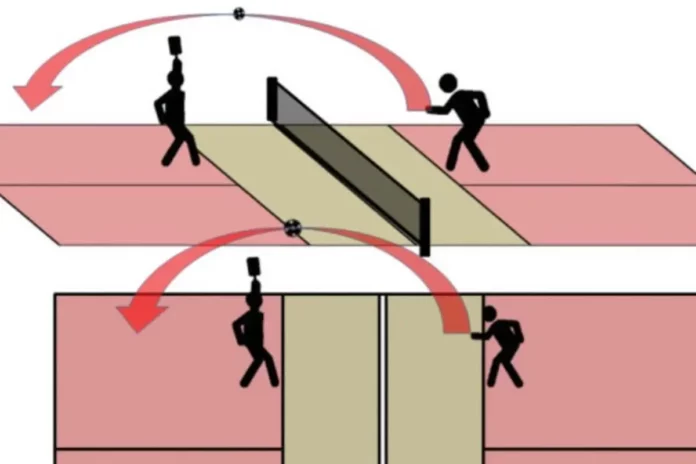Lobbing in Pickleball: A growing debate in the pickleball community revolves around the use of lobs, a pickleball tactic that some view as strategic and others consider disruptive. The conversation gained traction after a social media post highlighted how frequent lobbing has transformed games in one particular venue, leading to frustration among players. The post resonated with many, sparking a wave of commentary offering opinions, strategies, and criticism.
Lobbing: A Strategy or a Stalemate?
For some players, lobbing is a legitimate pickleball strategy that challenges opponents to improve their footwork and overhead skills. One player noted that a well-placed lob can expose weaknesses in positioning, particularly if opponents hug the kitchen line too tightly. Others, however, see lobbing as a tactic often overused by players lacking versatility.
Critics argue that excessive lobbing slows the pace of the game and increases the risk of injuries, particularly in groups with older players. In one venue dominated by elderly participants, constant lobbing reportedly led to a less engaging game dynamic, frustrating those who preferred the fast-paced exchanges typical of pickleball.
Addressing the Lob: Solutions and Strategies
Many experienced players emphasized that countering lobs effectively requires practice and adjustments. Overhead drills, proper footwork, and positioning further back from the non-volley zone were among the most recommended solutions.
A frequent suggestion was to “punish” lobs with well-placed smashes. Players shared anecdotes of how a few decisive overheads often discouraged chronic lobbers from continuing the pickleball tactic. Another popular tip involved taking a step back from the kitchen line to anticipate and counter lobs, especially at lower skill levels.
The Generational Divide
The debate also revealed a generational dynamic within the sport. Younger players often see lobbing as part of the game’s strategy, while older players may find it physically demanding or unappealing. One player likened the issue to a cultural clash, stating that in tennis, experienced players are celebrated for their skillful shot-making, while pickleball seems to encourage a wider range of pickleball tactics, including lobbing.
This divide has led some to suggest that groups establish guidelines to limit lobbing, particularly in settings with older participants. Others argue that such rules would dilute the sport’s inclusive and competitive nature.
Learning to Adapt
The broader takeaway from the debate is that pickleball, as a sport, demands adaptability. Whether facing lobbers or bangers, players are encouraged to refine their skills and develop counter-strategies. As one commenter aptly stated, “If you can’t swim, don’t go into the sea.”
News in Brief: Lobbing in Pickleball
The pickleball community is divided over the use of lobs, with some seeing it as a strategic move to challenge opponents’ positioning, while others view it as disruptive and overused. Critics argue that excessive lobbing slows the game and increases injury risks, especially among older players.
To counter lobs, experienced players recommend practicing overhead smashes and adjusting positioning. A generational divide also exists, with younger players embracing lobbing, while older players find it physically demanding. As pickleball evolves, players are encouraged to adapt and refine their skills, making the ongoing debate a key factor in the sport’s development.
ALSO READ: Secret Lob Defense Techniques to Win Big in Pickleball Matches Uncovered!!

